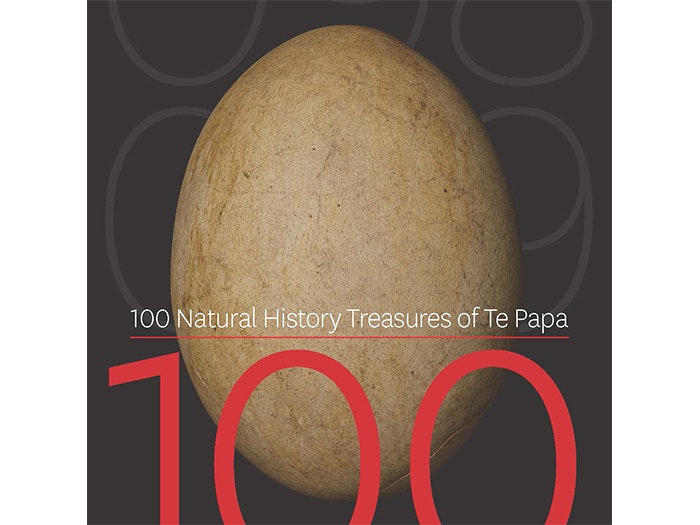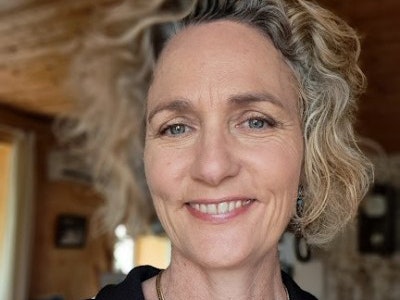
100 Natural History Treasures of Te Papa
An insider’s guide to the natural treasures of New Zealand’s national museum.
Free museum entry for New Zealanders and people living in New Zealand
Open every day 10am-6pm
(except Christmas Day)
Free museum entry for New Zealanders and people living in New Zealand
Susan Waugh discusses 100 Natural History Treasures of Te Papa with Te Papa Press.
Dr Susan Waugh manages the science and natural history programme for the Museum of New Zealand Te Papa Tongarewa. Her personal field of expertise is in seabird population ecology, and she has research experience in petrel and albatross foraging, population estimation and fisheries by-catch management.
The book is a deep dive into the collections and a ‘curated’ set of objects that explores the different disciplines and the ways we work as scientists within the museum field. We tell the stories of how objects in the collections help us unlock the secrets of New Zealand’s unique biodiversity. By contrast, the exhibition explores our natural world through two lenses – one the Mātauranga Māori perspective on Te Taiao – the natural world or cosmos, through its longitudinal study of nature and human interaction; the other through a geographical and scientific exploration of what’s unique, threatened, and how to contribute to a better future for it. Both perspectives intertwine, and contribute to how we, as New Zealanders and visitors to Aotearoa, build a resilient and sustainable future for our corner of the planet.
I hope that readers will be inspired to engage with nature in their own ways, and find their own stories or angles of discovery. The guy at the marine supplies shop was telling me today about how he let the grass grow tall on his property to help the birds and insects! That’s a great example of how we all have small ways we can make a difference for nature in our own back yards.
The objects selected and the stories associated highlight that some very unassuming items can lead to amazing discoveries – it’s all about asking the right questions. We hope the readers will have their curiosity kindled, and feel the urge to share their own ideas and feelings about things in the natural world with their friends and family.
We aimed to get everyone who works with us in our core Natural History team to contribute to the project. What we delivered shows how dedicated they are, how diverse and in-depth their knowledge is, and what a great bunch of story tellers they are, when we all take the time to sit down and write.
Te Papa’s science is grounded in defining the unique biological character of our nation. The collection, and items featured in the book show how that special biota is connected across the southern hemisphere and around the world. There are lovely connections that come through between plants and animals – e.g. the fungus gnats/orchid co-evolution, and between specialists. What makes our agency really special among science organisations is that our team is highly collaborative and together, we work across all of the biota of the region. We’re specialists on our own thing, but can find connections wherever we turn.
We did start with around 250 or 300 objects, and had some areas we really wanted to highlight. Some of them were ‘unique’ objects that are found nowhere else, such as the extinct tree species, Woloonia – and tell the story of how museums record these observations in a tangible form; others had been part of a major change in thinking in a field of science, such as the iguanodon tooth – which sparked the knowledge of a past that looked different from today and had endured for eons, not just millennia; and others showcased our work in present day science which leverages the collections – such as the genetics examples or newly described species. We also selected stories that highlighted some of our major collectors. We wanted quirky stories that demonstrated the essence of what Te Papa’s breadth of science is, and most importantly to showcase our fabulous collection in all of its extraordinary diversity.
Being succinct can be a challenge, but our staff are great communicators, and also enjoy the side of the work where we relate to the public. The body of work presented in 100 Natural History Treasures of Te Papa shows that even the most banal objects have fascinating stories. While we’ve picked out some of the quirky and momentous ones, the Te Papa collection of several million plants and animals all have stories to tell!
Of course it’s always exciting to see what inspires my colleagues, and few people can cover several science disciplines in equal depth! Probably no-one has covered all of science since the days of Pliny! The really delicious part of this process is discovering why we find an object or its story interesting – it helps you to open up to these new perspectives yourself! It’s like discovering that your friends like a genre of music or a flavour of ice-cream you had never imagined or discovered before.
Te Papa has more stuff than you can wave a stick at! And I already knew that when we started! But I was still surprised. Imagine if we could share all of those treasured items with an even broader public and more diverse audiences, and capture their insights into what they mean in our lives? What a rich, wonderful experience that would be.
I loved the luminous limpet story – and it has a crazy back story of how much skill and effort it took to photograph this insane creature doing its thing! I think Jean-Claude should get a medal for lighting, composition, animal behaviour study and determination.
A Honey Bee Heart Has Five Openings (fiction) by Helen Jukes. For pleasure. I started beekeeping more seriously this year (previously I just helped a friend), and it’s interesting to see how this author parallels the activity with her own need to create serenity and order in her life. My motivation for doing the beekeeping is rather simpler, I’m doing my bit for ecosystem services – pollination and biodiversity conservation. The measure of success is a very good crop of apples & pears, cooked up into marvellous deserts with lashings of honey!
https://www.theguardian.com/books/2018/jul/20/a-honeybee-heart-has-five-openings-buzz-review

An insider’s guide to the natural treasures of New Zealand’s national museum.
